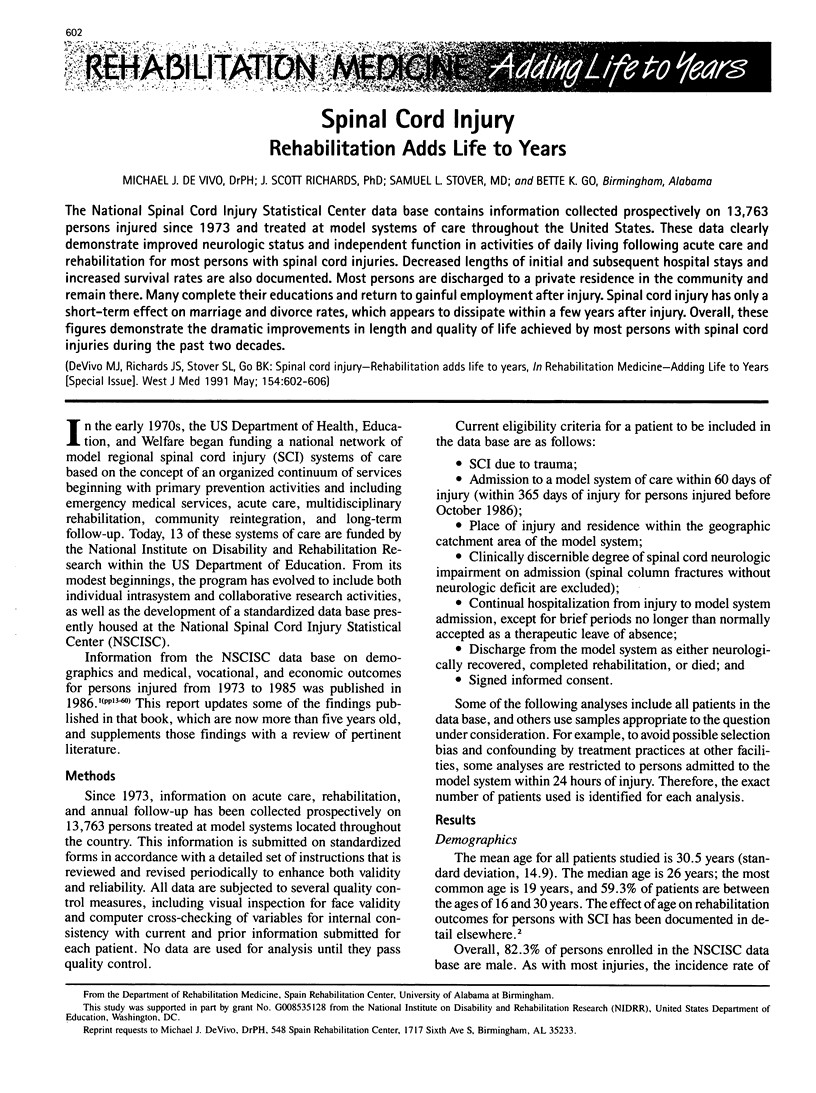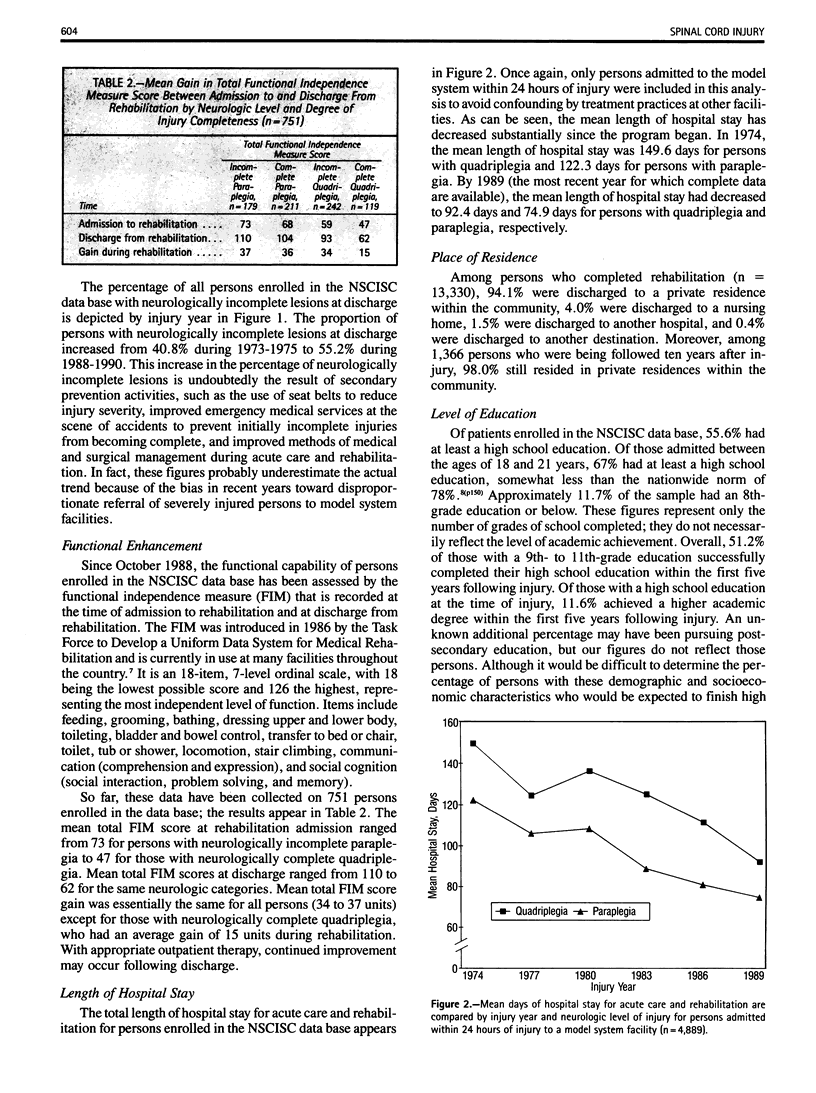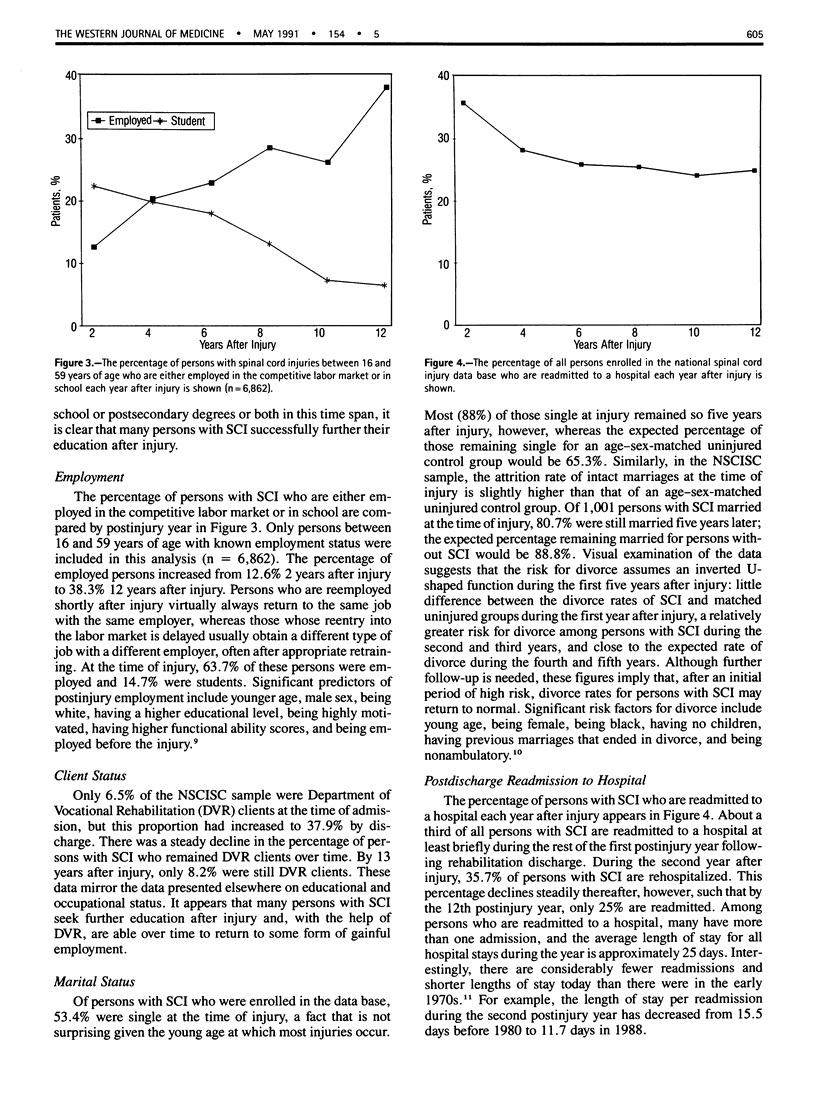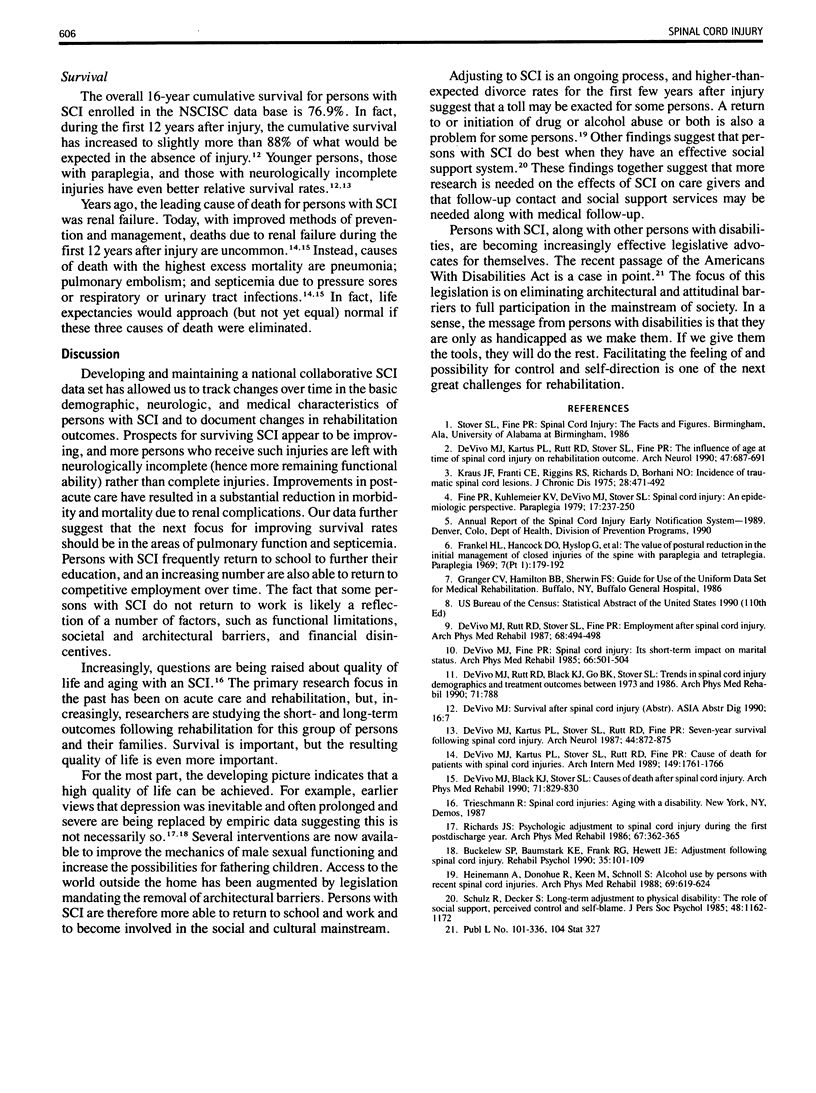Abstract
The National Spinal Cord Injury Statistical Center data base contains information collected prospectively on 13,763 persons injured since 1973 and treated at model systems of care throughout the United States. These data clearly demonstrate improved neurologic status and independent function in activities of daily living following acute care and rehabilitation for most persons with spinal cord injuries. Decreased lengths of initial and subsequent hospital stays and increased survival rates are also documented. Most persons are discharged to a private residence in the community and remain there. Many complete their educations and return to gainful employment after injury. Spinal cord injury has only a short-term effect on marriage and divorce rates, which appears to dissipate within a few years after injury. Overall, these figures demonstrate the dramatic improvements in length and quality of life achieved by most persons with spinal cord injuries during the past two decades.
Full text
PDF




Selected References
These references are in PubMed. This may not be the complete list of references from this article.
- DeVivo M. J., Fine P. R. Spinal cord injury: its short-term impact on marital status. Arch Phys Med Rehabil. 1985 Aug;66(8):501–504. [PubMed] [Google Scholar]
- DeVivo M. J., Kartus P. L., Rutt R. D., Stover S. L., Fine P. R. The influence of age at time of spinal cord injury on rehabilitation outcome. Arch Neurol. 1990 Jun;47(6):687–691. doi: 10.1001/archneur.1990.00530060101026. [DOI] [PubMed] [Google Scholar]
- DeVivo M. J., Kartus P. L., Stover S. L., Rutt R. D., Fine P. R. Cause of death for patients with spinal cord injuries. Arch Intern Med. 1989 Aug;149(8):1761–1766. [PubMed] [Google Scholar]
- DeVivo M. J., Kartus P. L., Stover S. L., Rutt R. D., Fine P. R. Seven-year survival following spinal cord injury. Arch Neurol. 1987 Aug;44(8):872–875. doi: 10.1001/archneur.1987.00520200074023. [DOI] [PubMed] [Google Scholar]
- DeVivo M. J., Rutt R. D., Stover S. L., Fine P. R. Employment after spinal cord injury. Arch Phys Med Rehabil. 1987 Aug;68(8):494–498. [PubMed] [Google Scholar]
- Fine P. R., Kuhlemeier K. V., DeVivo M. J., Stover S. L. Spinal cord injury: an epidemiologic perspective. Paraplegia. 1979 Jul;17(2):237–250. doi: 10.1038/sc.1979.47. [DOI] [PubMed] [Google Scholar]
- Frankel H. L., Hancock D. O., Hyslop G., Melzak J., Michaelis L. S., Ungar G. H., Vernon J. D., Walsh J. J. The value of postural reduction in the initial management of closed injuries of the spine with paraplegia and tetraplegia. I. Paraplegia. 1969 Nov;7(3):179–192. doi: 10.1038/sc.1969.30. [DOI] [PubMed] [Google Scholar]
- Heinemann A. W., Keen M., Donohue R., Schnoll S. Alcohol use by persons with recent spinal cord injury. Arch Phys Med Rehabil. 1988 Aug;69(8):619–624. [PubMed] [Google Scholar]
- Kraus J. F., Franti C. E., Riggins R. S., Richards D., Borhani N. O. Incidence of traumatic spinal cord lesions. J Chronic Dis. 1975 Oct;28(9):471–492. doi: 10.1016/0021-9681(75)90057-0. [DOI] [PubMed] [Google Scholar]
- Richards J. S. Psychologic adjustment to spinal cord injury during first postdischarge year. Arch Phys Med Rehabil. 1986 Jun;67(6):362–365. [PubMed] [Google Scholar]
- Schulz R., Decker S. Long-term adjustment to physical disability: the role of social support, perceived control, and self-blame. J Pers Soc Psychol. 1985 May;48(5):1162–1172. doi: 10.1037//0022-3514.48.5.1162. [DOI] [PubMed] [Google Scholar]


